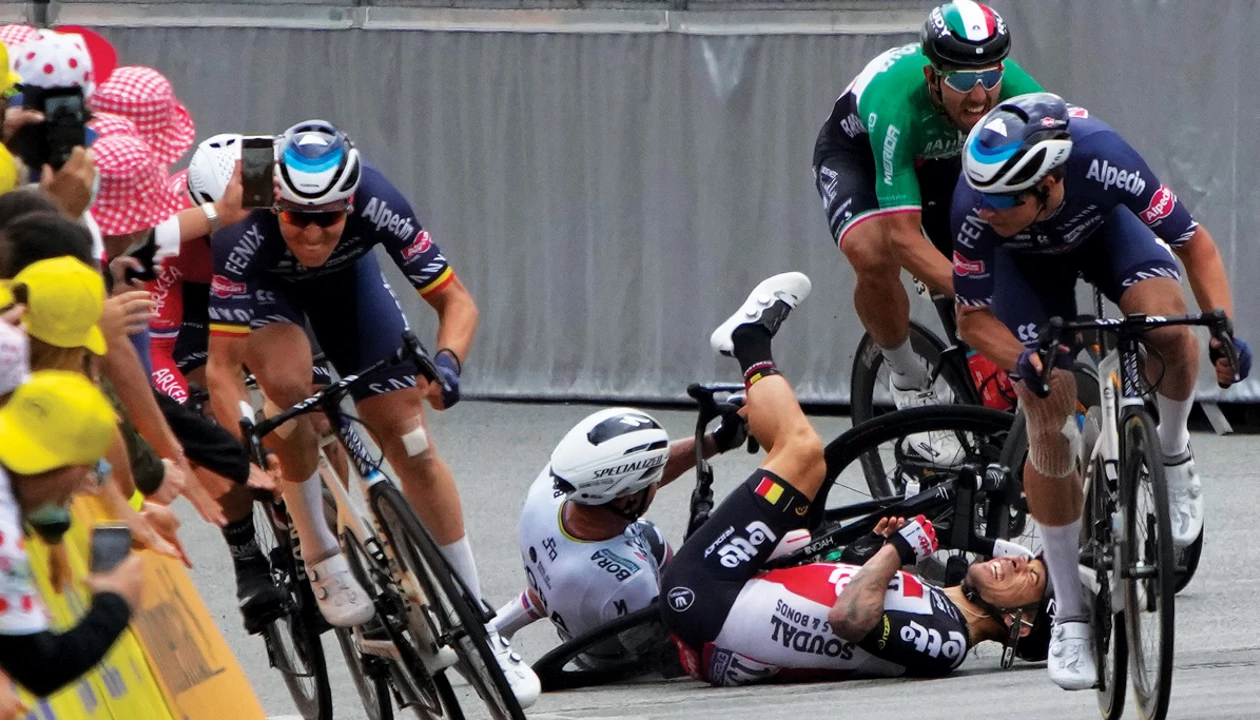Engineered to slide
October is a great month for getting out on a bicycle. But for cyclists—both amateurs like this Newscriptster and professionals—crashing or falling off your bike is simply inevitable. As Belgian cycling great Johan Museeuw once observed, “Crashing is part of cycling as crying is part of love.”
According to data collected from hospital surveys, over 230,000 bicyclist injuries were reported in the US in 2023. One of the most common is what cyclists call road rash—that is, skin abrasions that result from a rider sliding across asphalt or other surfaces while moving at speed.
But science is here to help cyclists. Many cycling clothing manufacturers are developing materials that go beyond the traditional single layer Lycra to help protect against road rash and other crash injuries.
Q36.5, for example, is a cycling clothing manufacturer based in Italy and a sponsor of a professional road-cycling team. The company produces clothing that incorporates Grdxkn (pronounced “grid skin”), a fabric made with a special textile-printing technology that enhances abrasion resistance, shock absorption, and aerodynamics. The fabric features a raised outer layer meant to cushion the shock from a fall. It gets abraded sacrificially to prevent damage to a rider’s skin underneath.
Another manufacturer, Nalini, is providing abrasion-resistant race wear to the Dutch professional cycling team Picnic PostNL. The bib shorts and jerseys worn by the team’s riders incorporate a strong synthetic fiber called Dyneema to reinforce the fabric and protect cyclists’ vulnerable areas like hips, shoulders, and backs. Dyneema is made of ultra-high-molecular-weight polyethylene produced using a special gel-spinning process. Often called the world’s strongest fiber, it is also used in cycling shoes and even bike frames.
These materials aim to protect riders by being tougher than Lycra or casual sportswear, and they also reduce skin abrasion by sliding against the ground and any base layers the rider may be wearing.
Made to stick
On the flip side, there are also plenty of scientists and engineers working to ensure that cyclists stick to the roads and trails—with their tires. Bike tire makers are getting better at giving cyclists a good grip, but achieving that grip is a tradeoff. Generally, increasing a tire’s ability to stay in contact with the asphalt or other surfaces means sacrificing some performance in terms of rolling resistance and durability. Building a grippier tire usually also means using softer rubber compounds that aren’t as long lasting or as resistant to punctures and other damage.
Undaunted, tire manufacturers are finding ways to get a better grip without sacrificing strength. Many, like Vittoria and Continental, are using multicompound rubbers that include ingredients like silica or graphene. Tailoring these combinations can improve rolling resistance or increase grip in dry or wet conditions.
In addition to enjoying better rubber, most pro cyclists and many amateurs are now running tires that have no inner tubes. These tubeless tires fit snugly on wheel rims and allow riders to use lower air pressures, which enhances performance and grip by creating a larger contact patch with the road or trail.
Before these tubeless tires are inflated, a liquid sealant is sprayed inside, between the rim and tire. The pressure in the tire after it’s inflated helps force the sealant into any punctures or small cuts that may develop—in essence, fixing flat tires before they happen. These sealants usually contain liquid latex, an antifreeze component like propylene glycol or ethylene glycol, and small fibers or filler for reinforcement as the sealant dries. Just one more way chemistry and science are keeping cyclists safer.
Please send comments and suggestions to newscripts@acs.org.
David Padgham David Padgham is a production editor for C&EN. Based in the metro DC area, David brings many years of science publishing experience to his role with C&EN’s production team. He holds a bachelor’s degree in English from Warren Wilson College in Asheville, NC, and a master’s degree in library and information science from The Catholic University in Washington, DC.
Chemical & Engineering News
ISSN 0009-2347
Copyright ©
2025 American Chemical Society

